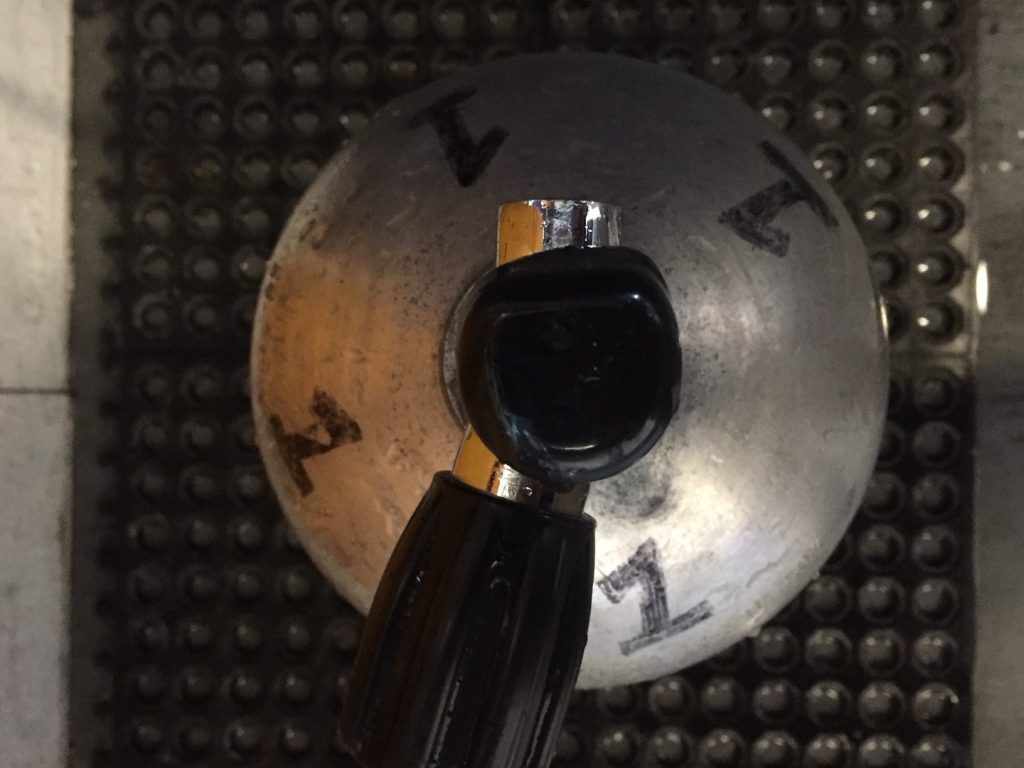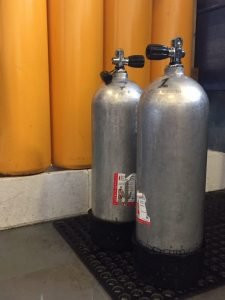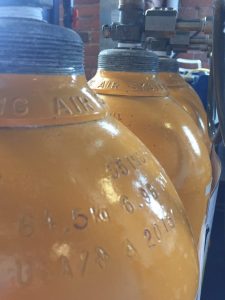Scuba Cylinders

Scuba equipment is absolutely critical to keeping divers protected and alive. Today, I want to talk about the one piece of gear that we divers need and is often overlooked—the scuba cylinder. Scuba cylinders supply air, enabling us to explore the underwater world that we have come to love. They come in many different shapes and sizes to serve different needs.
Back when the sport of scuba diving started, many innovative divers would actually take, used fire extinguishers and convert them for diving purposes. Today, we know this is not the best option, but just 40 or 50 years ago there was not much in the way of “dive shops” to go to. In fact back in those days a person could just walk into a local department store and buy most of what he or she needed to dive. It wasn’t until the creation of the first dive training and certification agencies that the sport started to become a little more like what you may recognize today.
Modern scuba cylinders come in two main materials: steel and aluminum. Each of those has their place within the industry. Steel is really the preferred choice of technical divers that go into the darkest reaches of the underwater world. It is more durable, has a better weight balance and can be more easily filled to higher pressures–all the way up to 5000 PSI (pounds per square inch).

Aluminum on the other hand is lighter and cheaper, so for the recreational diver or for the dive operation that needs a large supply of them, this becomes the better choice. Aluminum is not as forgiving when it comes to its durability and cannot be filled to as high a pressure. Aluminum cylinders can be bought in almost any color your heart desires. While, steel are usually galvanized dipped and look just like your neighbor’s chain link fence…lol.

Cylinder capacity is dictated by several factors. First, divers have to consider just how long you intend to stay underwater and the depth, since the deeper you are the more air you will use. Your breathing rate is the last piece of information to consider. Cylinder capacity is measured in cubic feet, and they can range from 3 cubic feet to more than 120 cubic feet. An average recreational aluminum scuba cylinder has a capacity of 80 cubic feet and generally weighs about 35 pounds and more than 42 pounds when full.
What do we put in scuba cylinders? That’s actually a bit of a trick question. Many people think that cylinders are full of oxygen but that is relatively unusual, most cylinders have air. What is air? Air is 78% nitrogen, 21% oxygen and 1% trace elements. It is very important for a diver to know what is in his or her scuba cylinder because diving with a gas mixture different from air can have consequences. Diving pure oxygen at depth can be a fatal mistake! One alternative gas some divers use is nitrox, which is similar to air but with less nitrogen and more oxygen. Using nitrox in our cylinders allows diver to stay at depth for longer and we divers love that.
So next time you are thinking “awwww . . . it’s just a cylinder,” you may want to ponder just a bit longer. Cylinder purchases and fills are important and if you are buying the lime green cylinder because it’s cool, there may be more to think about.
– Matthew Ballish
